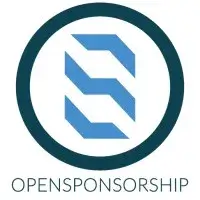Ready to launch your own podcast? Book a strategy call.
Frontlines.io | Where B2B Founders Talk GTM.
Strategic Communications Advisory For Visionary Founders
Conversation
Highlights
From Investment Banking to Impact: How Givz is Redefining Retail Discounting
Most ecommerce brands follow a predictable playbook: offer steep discounts during peak shopping seasons, watch customers flood in, then struggle to get them to return at full price. In a recent episode of Category Visionaries, Andrew Forman shared how Givz is flipping this model by replacing traditional discounts with donation incentives.
Instead of slashing prices by 50% during Black Friday, brands can offer “20% off plus 20% to give to charity,” Andrew explains. This seemingly small shift drives powerful results: “Average order value goes from 67 to 84 within a couple of weeks and it stays there for the rest of the year.”
The journey to this insight wasn’t straightforward. After six years in investment banking balanced with nonprofit work, Andrew saw firsthand how difficult it was for brands and nonprofits to collaborate effectively. But it wasn’t until H&M faced backlash over their Pride Month charitable giving that the true market opportunity emerged.
“They had done a Pride Month initiative the year before where they donated $3 million, a million dollars to three different charities,” Andrew recalls. “And they got a ton of pushback from the LGBTQ community saying, why did you choose these three charities? Why don’t you choose our charity?”
This pain point – brands wanting to do good but struggling with execution – became Givz’s entry point. Rather than forcing customers to support pre-selected causes, they built a platform that lets shoppers direct donations to charities they personally care about.
The results challenged conventional wisdom about cause marketing. “Previously it had been like, okay, 10% of sales goes to this one charity that the brand chose that the customer could, may or may not care about,” Andrew notes. “99% of the time does not care about that cause enough to really make them move or make a decision.”
But getting brands to see beyond the “charity” label proved challenging. “My nightmare scenario is, hey, I don’t have time to deal with charity stuff. I need to lift my average order value,” Andrew shares. His response? “This is the best way to lift your average order value. It just happens to do some good in the world.”
The model has proven successful across verticals – from luxury retail to CBD brands. Now Givz is expanding beyond ecommerce into broader behavioral incentives. Financial services company Betterment uses the platform to reward customers who set up recurring deposits. Jewelry stores are experimenting with QR codes that unlock charitable donations for high-value purchases.
Central to this expansion is an API-first approach. “We’re ultimately making an API driven approach that allows anybody, if you wanted to get people to post more about this podcast, right, and say, hey, anybody who posts about this podcast tags us in it, I’ll send you $5 to get to a charity of your choice,” Andrew explains.
This flexibility positions Givz to power what Andrew calls “purpose-driven marketing” – a new category that combines measurable business outcomes with meaningful social impact. By solving both technical integration challenges and regulatory compliance hurdles, they’re making it easier for brands to experiment with donation-based incentives at scale.
The early results suggest this could become a powerful alternative to traditional discounting, one that builds customer loyalty without eroding brand value. For companies looking to drive growth while making a positive impact, Givz’s approach offers a compelling roadmap.
Actionable
Takeaways
Integrate Purpose into Marketing:
Replace traditional discounts with donation incentives to increase sales and build brand loyalty.
A/B Testing for Quick Insights:
Test donation incentives against traditional discounts to quickly determine the most effective strategy.
Expand Customer Engagement:
Use donation incentives to drive higher average order values and foster long-term customer relationships.
Broaden Application:
Consider using donation incentives for non-e-commerce actions, such as banking deposits or in-store purchases, to drive desired behaviors.
Leverage Customer Testimonials:
Highlight successful campaigns and customer stories to build credibility and attract new clients through word-of-mouth referrals.
Recommended Founder
Interviews


Adrien Menard
CEO and Co-Founder of Botify
Adrien Menard, CEO and Co-Founder of Botify: $82 Million Raised to Build the Future of SEO


Chris Strahl
CEO of Knapsack
Chris Strahl, CEO of Knapsack: $7 Million Raised to Build the Future of Design Systems


Thomas Millay
CEO of DemandJump
Thomas Millay, CEO at DemandJump: Over $25 Million Raised to Power the Future of Content Strategy


Tom Lee
Co-Founder of LOVO AI
Tom Lee, Co-Founder of LOVO AI: $7 Million Raised to Build the Future of AI Voiceovers


Marc Bernstein
CEO and Founder of Balto
Marc Bernstein, CEO and Founder of Balto: $52 Million Raised to Power the Future of Contact Centers

Spencer Dusebout
CEO & Founder of Aidium
Spencer Dusebout, CEO & Founder of Aidium: $19 Million Raised to Build the Future of Mortgage CRM

Dan Rua
CEO of Admiral
Dan Rua, CEO of Admiral: $28 Million Raised to Build the Future of Visitor Relationship Management


Andy Mowat
CEO and Co-Founder of Gated
Andy Mowat, CEO and Co-Founder of Gated: Over $3 Million Raised to Build Noise Cancelling Headphones for Email


Michael Bamberger
CEO and Founder of Tetra Insights
Michael Bamberger, CEO and Founder of Tetra Insights: $7 Million Raised to Power the Future of Qualitative Research

Luke Hansen
CEO and Founder of CompanyCam
Luke Hansen, CEO and Founder of CompanyCam: $38 Million Raised to Build the Future of Visual Communication for Contractors


Zack Rosenberg
CEO and Founder of Qortex
Zack Rosenberg, CEO & Founder of Qortex: $11 Million Raised to Build the Future of Video Analytics


Ariana Faustini
Head of Golioth
Ariana Faustini, Head of Global Marketing at Golioth: Embracing Authenticity in Developer Marketing


Parry Bedi
Co-Founder and CEO of Tingono
Parry Bedi, CEO of Tingono: $7 Million Raised to Help Companies Boost Net Revenue Retention


Sam Mallikarjunan
Co-Founder & CEO of OneScreen
Sam Mallikarjunan, Co-Founder & CEO of OneScreen: $10 Million Raised to Power the Future of Offline Advertising


Ishveen Jolly
CEO and Co-Founder of OpenSponsorship
Ishveen Jolly, CEO and Co-Founder of OpenSponsorship: Over $5 Million Raised to Build the Future of Sports Influencer Marketing


Katy Carrigan
CEO of Goody
Katy Carrigan, CEO of Goody: $32 Million Raised to Build the Future of Corporate Gifting


Stephen Karaolis
Marketing Director of Cleary
Stephen Karaolis, Marketing Director at Cleary: Mastering Speed to Market – The Key to Dynamic Content Strategy


Patrick Woods
CEO and Co-Founder of Orbit
Patrick Woods, CEO and Co-Founder of Orbit: Over $22 Million Raised to Power the Future of Communities

Cory Schmidt
Head of Marketing of Heyflow
Mastering Organic Growth: Insights from Heyflow’s Head of Marketing


Creating the Go to Market Category with ZoomInfo’s Bryan Law
CMO of ZoomInfo
Creating the Go to Market Category with ZoomInfo’s Bryan Law


Ashish Nagar
Founder & CEO of Level AI
Ashish Nagar, CEO of Level AI: $35 Million Raised to Power Contact Centers of the Future


Ori Entis
CEO and Co-Founder of Staircase AI
Ori Entis, CEO and Co-Founder of Staircase AI: $5 Million Raised to Power the Future of Customer Revenue Growth


Robert Thelen
CEO & Founder of Rownd
Robert Thelen, CEO & Founder of Rownd: $3.3 Million Raised to Build the Future of App Onboarding


Creating the Marketing Automation Category with Mark Organ
CEO of Eloqua
Creating the Marketing Automation Category with Mark Organ


Sangram Vajre
Co Founder and CEO of GTM Partners
Behind the Category: Creating the Account-Based Marketing (ABM) Category with Sangram Vajre


Marty Ringlein
CEO & Co-Founder of Agree.com
Marty Ringlein, CEO & Co-Founder of Agree.com: $3M Raised to Transform Contract-Based Revenue Management


Pierce Ujjainwalla
CEO of Knak
Pierce Ujjainwalla, CEO of Knak: $25 Million Raised to Empower Enterprise Marketers with Codeless Email and Landing Page Creation


Jared Siegal
CEO and Founder of Aditude
Jared Siegal, CEO and Founder of Aditude: $15 Million Raised to Build the Future of Publisher Monetization


Alex Reynolds
Alex Reynolds, CEO & Co-Founder of Vendelux: $20 Million Raised to Build the Future of Event Intelligence

Ava Barnes
VP of Brand & Community of Alvys
From Psychology to 5X Growth: Inside Alvys’ Marketing Playbook


Hikari Senju
CEO and Founder of Omneky
Hikari Senju, CEO and Founder of Omneky: $10 Million Raised to Empower Brands With AI-Powered Ads To Maximize Performance


Jonas Rinde
CEO of Nomono
Jonas Rinde, CEO of Nomono: $15 million Raised to Power the Future of Podcasting


Tyler Strand
Co-Founder and CTO of Air
Tyler Strand, Co-Founder and CTO at Air: $38 Million raised to Build the Creative Operations Category

Omed Habib
VP of Sapient AI
Omed Habib, VP of Marketing at Sapient AI: A Technical Founder’s Guide to B2B SaaS Marketing


Sam Fonoimoana
Founder & CEO of Datajoin
Sam Fonoimoana, Founder & CEO of Datajoin: $3.5 Million Raised to Help Brands Leverage Customer Behavioral Insights


Leena Joshi
CEO of CloseFactor
Leena Joshi, CEO of CloseFactor: $15+ Million Raised to Automate Repetitive Sales Processes


John Jahnke
CEO and Co-Founder of Tackle.io
John Jahnke, CEO and Co-Founder of Tackle.io: $148 Million Raised to Build the Future of Cloud Go-to-Market


Tine Karlsen
Co-Founder & CEO of Vev
Tine Karlsen, CEO and Co-Founder of Vev: $7 Million Raised to Power the Future of No-Code Visual Design


Marty Kausas
CEO & Co-Founder of Pylon
Marty Kausas, CEO & Co-Founder of Pylon: $20 Million Raised to Build the First B2B Support Platform


Jonathan Legge
Co-Founder and CEO of &Open
Jonathan Legge, Co-Founder and CEO at &Open: Over $35 Million Raised to Create the Future of Corporate Gifting


Rajat Mishra
Founder & CEO of Prezent
Rajat Mishra, Founder & CEO at Prezent: Over $24 Million Raised to Build the Presentation Productivity Platform Category


Dan Malgran
VP of Marketing of Steno
Dan Malgran, VP of Marketing at Steno: Elevating Legal Tech with Revenue-Driven Marketing Strategies

Matt Krebsbach
Senior Vice President of Thought Leadership & Brand Awareness of Acquia
From Politics to PR: Building Unassailable Market Position


CEO and Co-Founder of Sendoso
Creating the Sending Management Category with Sendoso’s Kris Rudeegraap


Lars Grønnegaard Hansen
CEO and Co-Founder of Dreamdata
Lars Grønnegaard Hansen, CEO & Co-Founder of Dreamdata: $12 Million Raised to Build the Future of B2B Revenue Attribution


Taylor Lint
CEO and Founder of Swantide
Taylor Lint, CEO and Founder of Swantide: $7 Million Raised to Revolutionize How Companies Design and Build Their GTM Infrastructure


Chris Golec
CEO and Founder of Channel99
Chris Golec, CEO and Founder of Channel99: $5 Million Raised to Power the Future of B2B Marketing


Canay Deniz
CEO & Co-Founder of Ren Systems
Canay Deniz, CEO & Co-Founder of Ren Systems: $8.8 Million Raised to Build the Future of Relationship Intelligence for Dealmakers


Pulkit Agrawal
CEO & Co-Founder of Chameleon
Pulkit Agrawal, CEO & Co-Founder of Chameleon: $15 Million Raised to Build the Product Adoption Category


Daniel Erickson
Founder and CEO of Viable
Daniel Erickson, CEO of Viable: $9 Million Raised to Build the Future of Customer Feedback Analysis


Rob Sadow
CEO & Co-Founder of Scoop
Rob Sadow, CEO & Co-Founder of Scoop: $8 Million Raised to Build the Future of Hybrid Team Coordination


Vinay Jain
Founder of MadMen AI
Vinay Jain, Founder of MadMen AI: $4.5 Million Raised to Build the Future of AI-Powered Marketing Platforms